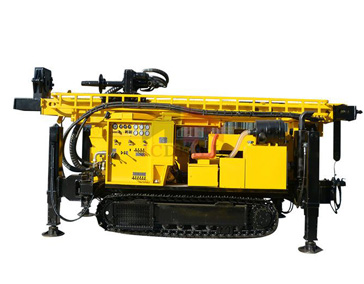+86 10 8467 3566
+86 10 8467 3566
Nov. 18, 21
Drilling rigs are used to drill the hole, lower and cement casing in the well, and provide a means to perform various auxiliary functions such as logging and well testing. The correct procedure for rig selection is to determine or design the various loads that will be applied to the equipment and select the most cost-effective rig that meets these requirements. To do this, the drilling contractor provides detailed rig specifications.
The rig can be subdivided into several component systems for design and sizing purposes. Although the following groupings of systems are arbitrary, they can be used as the basis for the selection process.
Force
Lifting
Derricks and substructures
Rotating
Circulation
Pressure control
These groups, although broad in nature, cover the most important aspects of rig design requirements.
Core Drilling Rig
Rig selection is made after the rig has been sized and is not entirely quantitative. While the objective is to select the most cost-effective rig, a number of factors must be considered.
Technical design requirements
Manpower qualifications for the rig, i.e. experience and training track record
Logistics handling
Rig site requirements
Rig selection can be further complicated by poor availability, or where long-term contract commitments for multiple rigs require the use of rigs that are not suitable for a particular well.
Drilling rigs are broadly divided into land rigs and offshore rigs. Each category is further broken down into several types. A rig selection process is undertaken to determine which rig is best for your activity. This process considers three factors.
capacity
availability
and cost

Core Drilling Rig
While availability and cost are important in the selection process, capacity remains the most critical criterion for selecting a rig. Rig sizing is therefore part of the rig selection process and is designed to ensure that the rig selected can handle all the expected loads during well construction and intervention operations.
Although oversizing a rig can lead to unnecessary costs, undersizing a rig has proven to be very costly to correct. It is therefore vital that the rig selection process is carried out at an early stage in the planning phase of a project.
While some operators have their own rig selection templates, it is good practice to standardize such processes and integrate them with the organization's engineering systems. Our rig selection methodology follows the following steps.
Perform offset well analysis and review documentation
Design wells based on surface and target locations in a way that minimizes T&D
Create a list of all the various expected loads (casing runs, tests, completions, etc.)
Create a risk register to record existing and anticipated risks (a stuck pipe, stuck casing, well control, etc.)
Perform rig selection for 5 rig systems (lift, circulation, power, rotary, and well control)
Determine rig availability in the area
Invite bids and select a rig based on capacity, availability, and cost (using a weighted decision matrix)
Let us help you find the types of drilling rigs for your project. When you contact us, please provide your detailed requirements. That will help us give you a valid quotation.